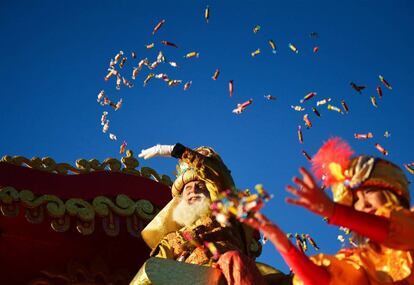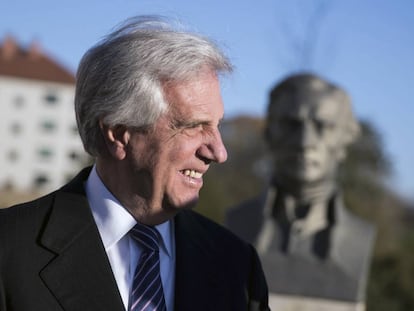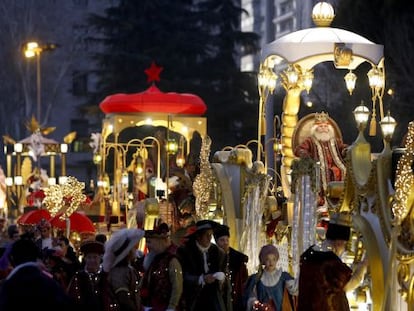Why the Three Kings won’t visit Uruguay this year
Catholic Church wants the highly secular nation to recognize religious origin of January 6 holiday
Officially, children in Uruguay have not had a visit from the Three Kings since 1919, when the country adopted one of the world’s only secular calendars after its State-Church separation two years earlier. Yet on this January 6, thousands of presents will fill people’s homes and workers will enjoy a day off.

Instead of being known as Día de Reyes (or Three Kings’ Day) as it is in most Spanish-speaking countries, Uruguayans will be officially celebrating the Día del Niño (Day of the Child).
The religious feast of the Epiphany, which is celebrated on January 6 by the Western Catholic Church, will end a special season for the country’s Roman Catholic community, which represents around 41% of the population – one of the lowest figures in the region.
Spurred on by church authorities, the community is attempting to rekindle the religious origin of this feast in Latin America’s most secularized nation, where 38% of the population says it does not practice any religion.
Nothing is stopping the various faiths from engaging in proselytizing activities or seeking to gain new members
Víctor Rodríguez Otheguy, Uruguay Association of Free Thinkers
Headed by Cardinal Daniel Sturla, who was appointed by Pope Francis, the Roman Catholic Church has embarked on a “new evangelization” of Uruguay aimed at attracting part of that 38% of non-confessional citizens, many of whom say they believe in God.
And one of the main hurdles is the country’s calendar, which was designed in 1919 by a liberal and church-opposing elite who, after winning a major battle in parliament, managed what not even the French or Soviet revolutionaries had achieved: removing religion from the calendar.
However, Catholic feasts were maintained, albeit under different names. When other parts of the world celebrate Christmas, Uruguayans have Family Day. Easter Week is known as Tourism Week, and the feast of the Immaculate Conception, held on December 8, is Beach Day in Uruguay.

Things have been this way for nearly 100 years, but the Roman Catholic Church now wants Uruguayans to rediscover the real origin of those national holidays.
And so religious leaders this year asked the faithful to place images of the Nativity on their balconies, churches were told to remain open at least four hours a day, and prayer groups were organized. Meanwhile, Cardinal Sturla denounced the imposition of the secular state model in a series of interviews and sermons.
“Anything to do with Catholicism triggers a response that is surprisingly acrimonious, and which has nothing to do with secularism, but rather with the secularizing drive of 100 years ago,” the cardinal has said.
Víctor Rodríguez Otheguy of Uruguay’s Association of Free Thinkers, feels that this call for a new evangelization is part of a global trend initiated by the new Pope in Rome.
The liberal elite managed what not even the French or Soviet revolutionaries had achieved
“Nothing is stopping the various faiths from engaging in proselytizing activities or seeking to gain new members; that is protected by the Constitution, which guarantees religious freedom,” he notes.
But Otheguy says that what the Catholic Church aims to do is to reintroduce religion education into the public education system.
No to Mary statue
In 2016, Sturla failed in his attempt to erect a statue of the Virgin Mary on Montevideo’s Rambla, a 22-kilometer seaside promenade and the capital’s main landmark.
The promenade has no Catholic symbols, although it does contain a statue of Yemoja, a water goddess from the Yoruba religion of West Africa, along with another of Chinese philosopher Confucius.
But Uruguay’s secularists, both from the right and from the left, refused to budge, and Catholics were left without a statue of Mary.
And so the Three Wise Men continue to bypass Uruguay, although the presents keep showing up every January 6.
English version by Susana Urra.
Tu suscripción se está usando en otro dispositivo
¿Quieres añadir otro usuario a tu suscripción?
Si continúas leyendo en este dispositivo, no se podrá leer en el otro.
FlechaTu suscripción se está usando en otro dispositivo y solo puedes acceder a EL PAÍS desde un dispositivo a la vez.
Si quieres compartir tu cuenta, cambia tu suscripción a la modalidad Premium, así podrás añadir otro usuario. Cada uno accederá con su propia cuenta de email, lo que os permitirá personalizar vuestra experiencia en EL PAÍS.
¿Tienes una suscripción de empresa? Accede aquí para contratar más cuentas.
En el caso de no saber quién está usando tu cuenta, te recomendamos cambiar tu contraseña aquí.
Si decides continuar compartiendo tu cuenta, este mensaje se mostrará en tu dispositivo y en el de la otra persona que está usando tu cuenta de forma indefinida, afectando a tu experiencia de lectura. Puedes consultar aquí los términos y condiciones de la suscripción digital.
More information
Archived In
Últimas noticias
Reinhard Genzel, Nobel laureate in physics: ‘One-minute videos will never give you the truth’
Pinochet’s victims grapple with José Antonio Kast’s rise in Chile
How Japan is trying to avert ‘digital defeat’
The complicated life of Francesca Albanese: A rising figure in Italy but barred from every bank by Trump’s sanctions
Most viewed
- Pablo Escobar’s hippos: A serious environmental problem, 40 years on
- Why we lost the habit of sleeping in two segments and how that changed our sense of time
- Charles Dubouloz, mountaineering star, retires at 36 with a farewell tour inspired by Walter Bonatti
- Trump’s obsession with putting his name on everything is unprecedented in the United States
- The Florida Keys tourist paradise is besieged by immigration agents: ‘We’ve never seen anything like this’










































